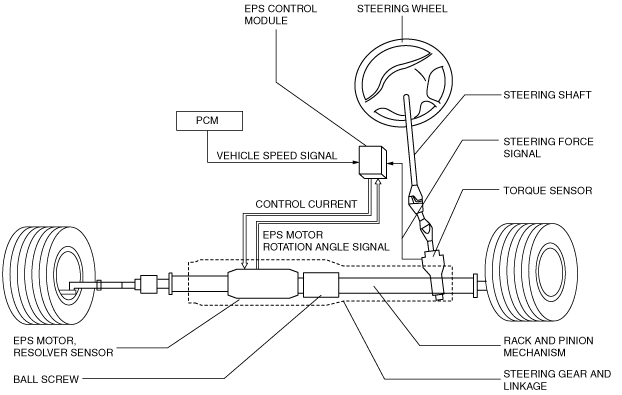 |
am6zzn00000479
ELECTRIC POWER STEERING (EPS) CONSTRUCTION AND OPERATION
id061300246300
Construction
am6zzn00000479
|
Operation
Manual steering mechanism operation
Power assist mechanism operation
Component parts and function
|
Part name |
Function |
|
|---|---|---|
|
Steering gear and linkage
|
Torque sensor
|
• Detects the steering force and inputs it to the EPS control module.
|
|
Resolver sensor
|
• Detects the motor rotation angle and inputs it to the EPS control module.
|
|
|
EPS motor
|
• Generates assist force based on the control current from the EPS control module.
|
|
|
EPS control module
|
• Determines the control current for the EPS motor based on the steering force signal from the torque sensor, vehicle speed signal from the PCM and other signals.
• Inputs an idle increase command signal to the PCM via CAN lines.
• Controls the on-board diagnostic system and fail-safe function when a malfunction is detected in the EPS system.
|
|
|
PCM
|
Vehicle speed signal
|
• Inputs the vehicle speed signal to the EPS control module via CAN lines.
|
|
Engine speed signal
|
• Inputs the engine speed signal to the EPS control module via CAN lines.
|
|
|
Instrument cluster
|
EPS warning light
|
• The light illuminates to inform the driver when a system malfunction is detected.
|